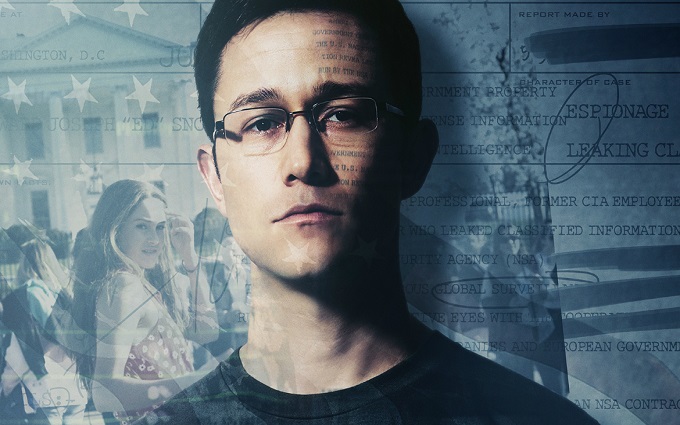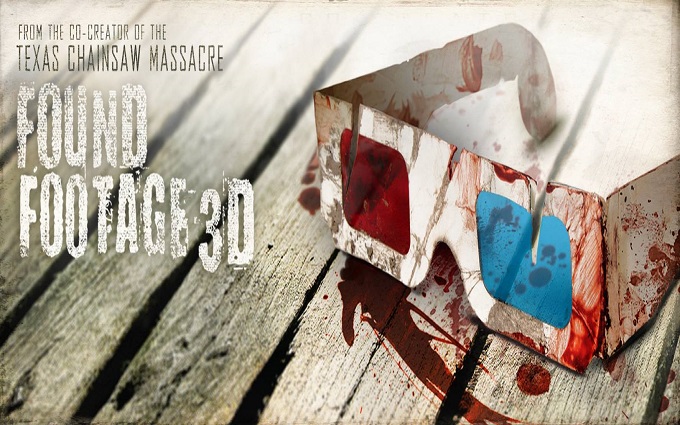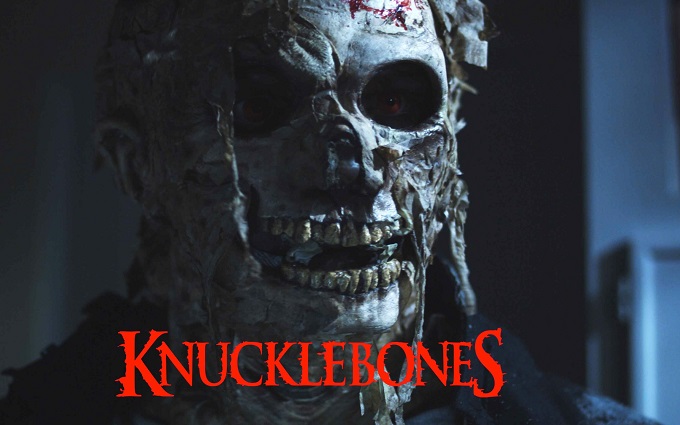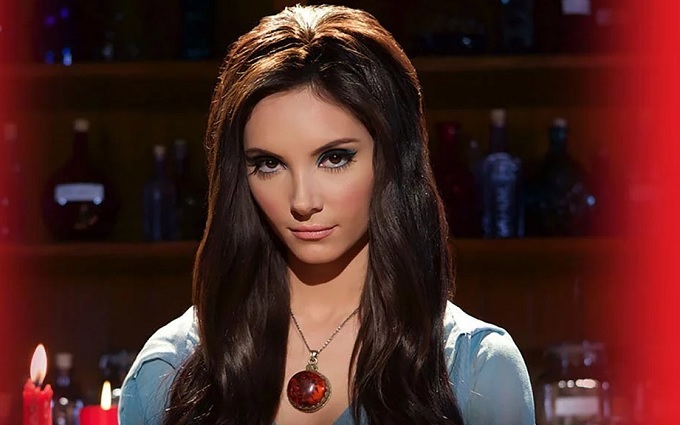Snowden Review TIFF

The Plot
The NSA’s illegal surveillance techniques are leaked to the public by one of the agency’s employees, Edward Snowden (Joseph Gordon-Levitt), in the form of thousands of classified documents distributed to the press.
The Good
Director Oliver Stone brings the story of Edward Snowden to life in this dramatic retelling of actual events. Set between 2004 and 2013, Snowden goes through its titular subjects career from his early days as a patriotic army cadet, through to his work with the NSA and ultimately his whistle blowing which made him a household name around the world. At 2 hours and 14 minutes, Snowden surprisingly feels much shorter. This is thanks mainly to the screenplay, co-written by Stone and Kieran Fitzgerald (The Homesman) which manages to balance the importance of the story with the personal side of Snowden while explaining technical jargon with ease.
Meanwhile, Gordon-Levitt embodies the character perfectly in both looks and emotion. As we see Snowden become increasingly paranoid about the morality behind the going-ons at the NSA, Gordon-Levitt manages to bring a thoroughly believable piece of acting across all boards.
Co-starring with Gordon-Levitt as the journalists and documentary maker respectively, are Zachary Quinto, Tom Wilkinson and Melissa Leo who manage to bring as much as their characters can to the film. Nicholas Cage and Rhys Ifans also join as the faces of the NSA, the former a bitter man who gives the alternative viewpoint for how Snowden’s life could have turned, and perhaps Cages best performance in recent years simply due to the fact that he doesn’t have enough screentime to really screw it up. Ifans conversely plays the scenery chewing high-level intelligence operative Corbin O’Brian who serves his role as shady paranoia building character effortlessly.
However, with the film obviously revolving around Snowden himself, the real standout co-star is Shailene Woodley as Snowden’s girlfriend, Lindsay Mills. Woodley proves herself yet again to be an actress of particular note no matter what she does (even, Divergent…) and brings some true chemistry alongside Gordon Levitt.
The Bad
Those hoping to find a deeper more thought provoking storyline may feel a tad sidelined with this biopic which, as its title suggests, leans much more heavily upon Snowden himself than the real issues at hand. While Fitzgerald and Stone’s script does indeed manage to balance the two it is perhaps inevitable that it feels like a documentary, like 2014’s Citezenfour would perhaps offer more in the truth and technicalities of the hacking scandal which Snowden does of course still delve into, albeit in a much more popcorn friendly scene involving a Rubik’s cube.
The Ugly Truth
Oliver Stone presents a technically faultless biopic which explores the character of Snowden while also managing to explain the importance of the events surrounding him with ease. Those looking for more information would best be suited for Citezenfour.
Ibiza Undead Review
 The Plot
The Plot
A group of young people head to Ibiza for the holiday of a lifetime – all the sun, sea and sex they can handle. If only there wasn’t a zombie outbreak getting in the way.
The Good
Set in a world in which zombies are a national epidemic in Britain, though more of an annoyance than an actual threat at this point, Ibiza Undead throws a couple of fun ideas at the premise as our three central characters escape to a place where zombies have not taken over and instead have been utilised as part of the island’s entertainment for tourists.
Hints of a zombie app for humans to use to survive as well as the use of zombies as attractions for strip clubs are nice touches, but the main brunt of the films fun comes from its gore. With any zombie movie you expect some entertaining kills and here, ibiza Undead does not disappoint. Highlights include the inventive use of a glow stick and an umbrella, as well as a hilariously dark moment which sees a plan to stop someone from turning into a zombie.
The Bad
All this however is not enough to make you forget about the underwhelming outcome of the film. The clunky and wooden dialogue that is scattered throughout the script is just the tip of an iceberg which also contains poor acting and missed opportunities. When we’re first introduced to the world of the film, we’re given a cheaply made scene with two gas masked security guards guarding an airport which looks just devastatingly fake. And while the idea of Britain under a zombie epidemic is set up, it’s done so poorly with little exploration into it. Granted, the film swiftly moves to Ibiza for the entire film, but it’s still a shame to see such an interesting take on british teenagers living in this world nonplussed, being thrown aside to make way for a generic zombie film.
If the dialogue wasn’t bad enough, whats worse still is the scenes themselves which linger far too long and oftentimes don’t flow together as well as they could. There are moments scattered throughout the film which feel like the camera has just been left on or that the editor has yet to fine tune it.
The Ugly Truth
Ibiza Undead introduces an interesting take on a zombie infested world wherein the survivors just aren’t impressed by it. Unfortunately it drops any attempt to explore this further and instead throws in wooden dialogue and lingering scenes. The only real highlights are the kills.
Review by Johnny Ellis
Found Footage 3D Review

The Plot
A group of filmmakers set out to make the first 3D found footage horror movie, but find themselves IN a found footage horror movie when the evil entity from their film escapes into their behind-the-scenes footage
The Good
The slasher genre has Scream, and now, the found footage genre has its equivalent in Steven DeGennaro’s fantastically written horror which sends up the genre perfectly, yet still manages to adhere to the rules. Focusing on the making-of documentary, Found Footage 3D sees 6 budding filmmakers trek out to a lonely cabin to try and break new mould in the found footage genre by adding a 3D element. Headed by the arrogant writer/lead actor Derek (Carter Roy), the film mixes it’s film-within-a-film neatly into the storyline as Derek’s idea, titled Spectre, struggles to stay alive with its ending still in limbo and a 3D enthusiasm for its lead character stapled in as a last minute explanation for the films stereoscopic style.Where Found Footage really succeeds is in its on the nose humour and ironic approach to the rules of the genre.
It’s not all tongue in cheek though. In its heart Found Footage is still a worthy addition to the genre and is better than most of the films that are churned out of the franchise these days. As director Andrew (Tom Saporito) wisely acknowledges, a found footage film needs to answer two main questions correctly in order for it to work, first: why are we filming? and second: why are we STILL filming? While Spectre doesn’t succeed in this respect, especially in terms of the second question, Found Footage manages to find a way to answer both perfectly.
Then there’s the horror element. Most of this is done through it’s irony, with Spectre’s scenes setting up an incoming jump scare for the audience which is practically pre warned, only to jump out before the fictional cameras start rolling. In addition to this we have Derek’s on set antics in which he attempts to keep the reality of the found footage idea alive outside of the film, adding to the unease.
The Bad
While Found Footage manages to skirt around most of the problems that come with the genre, there are still some elements that occasionally seep into the film that unfortunately can’t be completely deleted. One such problem is the camerawork, most of which is fairly stable but especially in its final moments becomes much more haphazard and travel sickness inducing.
The Ugly Truth
Steven DeGennaro has struck gold with the found footage genre in the same way that Scream did with the slasher, 20 years previously. It might not be enough to breathe new life into the idea that has been done to death by now, but it’s certainly one of the best attempts in a long time.
Review by Johnny Ellis
Knucklebones Review

The Plot
A group of bored college students unleash a murderous demon while playing a dice game made from human knucklebones.
The Good
Writer Mitch Wilson’s directorial debut brings one of the most exciting horror villains to life in the form of Knucklebones, a skull-headed demon who terrorises a group of young teenagers after they decide to play with pentagrams. Which is really never a good idea when it comes to horror. Fantastically played by Tom Zembrod, Knucklebones has managed to establish himself as an iconic horror villain that takes the bloodthirst of Jason Voorhees and the darkly camp humour of Freddy Kruger and mashes it together perfectly. Whether he’s terrorising his victims with his spine-tingling stalking skills or busting out some killer gags during his kills, Knucklebones is the first success in horror icons for a long long time.
Set in an abandoned warehouse where our main heroes decide to hang out in order to cheer up Neesa (Julin) after a breakup leads to a suicide attempt. Julin brings a strong central performance to the screen with the script managing to set up the premise at a steady pace which is surprising considering the three separate introductions it offers, first in 1944 with Nazis attempting to meddle with the cursed game, then again in 1977 where a young boy gets involved with Knucklebones, before landing on present day. It might sound like a lot but Wilson’s script manages to make the time fly by.
The Bad
If you’re going in expecting a great piece of filmmaking you may feel short-changed by the time the credits roll. It’s certainly no Shining, and really should be approached with the same attitude it clearly had during filming; good gory fun.
The Ugly Truth
At its essence, Knucklebones is a love letter to the slasher films of the 80s with some clear inspiration taken from icons such as Freddy and Jason, while still managing to produce an instant icon of its own. Here’s hoping this is just the start of the Knucklebones franchise.
Review by Johnny Ellis
The Love Witch Review

The Plot
Lovelorn young witch Elaine (Samantha Robinson) uses spells and potions to bring her everlasting romantic happiness.
The Good
Writer-director Anna Biller brings the years most beautiful film to life in this lovingly created world which offers up a symphony to exploitation cinema of the 60s and 70s. Samantha Robinson `brings a stunningly evocative performance to the screen as the titular Love Witch, Elaine, who moves to a new neighbourhood after becoming widowed from her previous boyfriend, in search of new love. Biller’s script manages to mix a strong female protagonist with the dated ideals of the films that inspired it as Elaine goes through life dreaming of being the perfect housewife for a willing man, only to have her exploits cut short by tragedy each time.
Set upon a backdrop of stunning scenery and cinematography that feels like it’s been plucked from the 1960s, it is hard to remind yourself that this is a modern film. With each and every costume detailed perfectly to bring this strange and wonderfully alluring world to life, The Love Witch feels like a film that could loop on your screen forever and never lose its charm.
The Bad
There really isn’t much to say against the film as a whole, but a couple of blink and you’ll miss them references to a world much more modern than the film originally sets out to portray, can’t go unmentioned. For much of the film, the set design is an utter joy to let wash over you, however, unfortunately things such as modern day cars in the frame can feel slightly jarring. This wouldn’t be too much of a problem had it been able to have been passed off as a simple mistake during filming. But then the idea of two vastly different time periods being mixed together is confirmed once more when a mobile phone appears and is used to further the plot. Had Biller simply kept the tone of the film firmly in the past, The Love Witch could have become an instant classic to be lost in amongst the cinema of a time gone by which clearly inspired it.
The Ugly Truth
Anna Biller has created one of the most stunningly attractive films of recent years which is at times surprising to remember it was made in the 21st century. Unfortunately the illusion becomes shattered a few times with the use of modern technology which ultimately feels incredibly out of place.
Review by Johnny Ellis